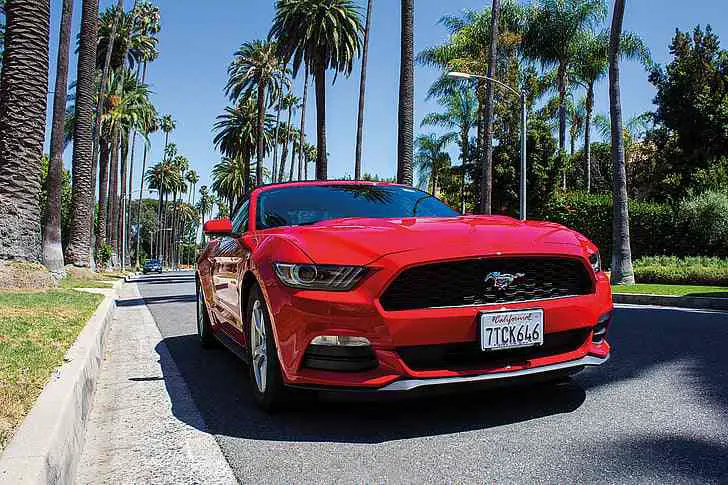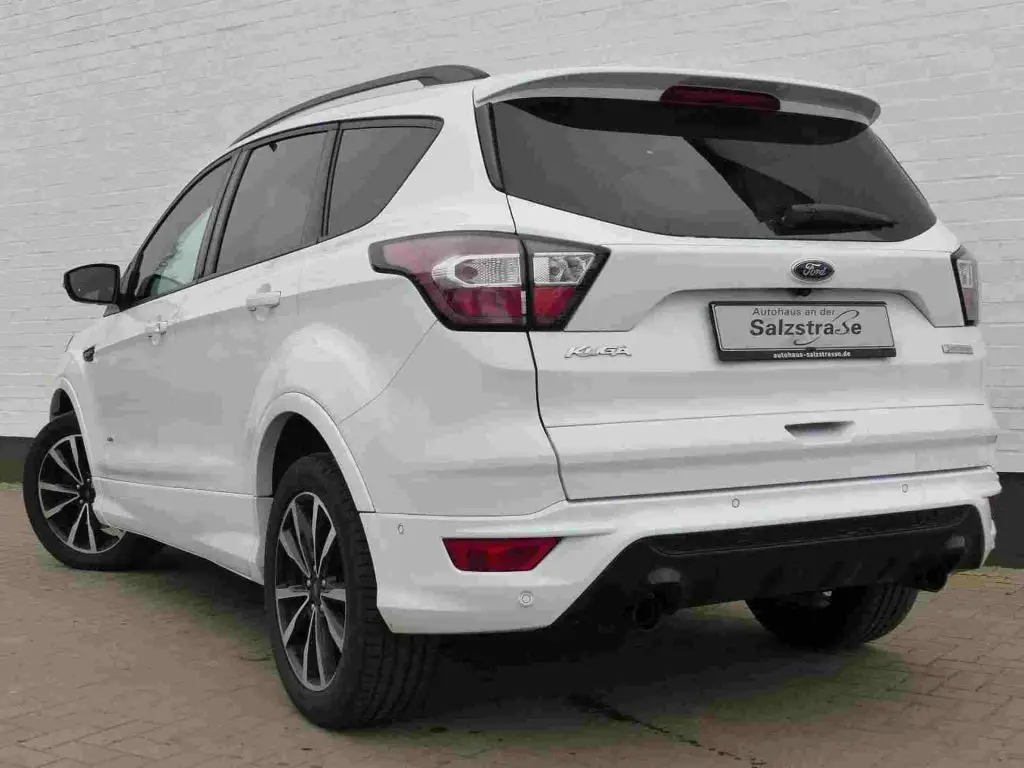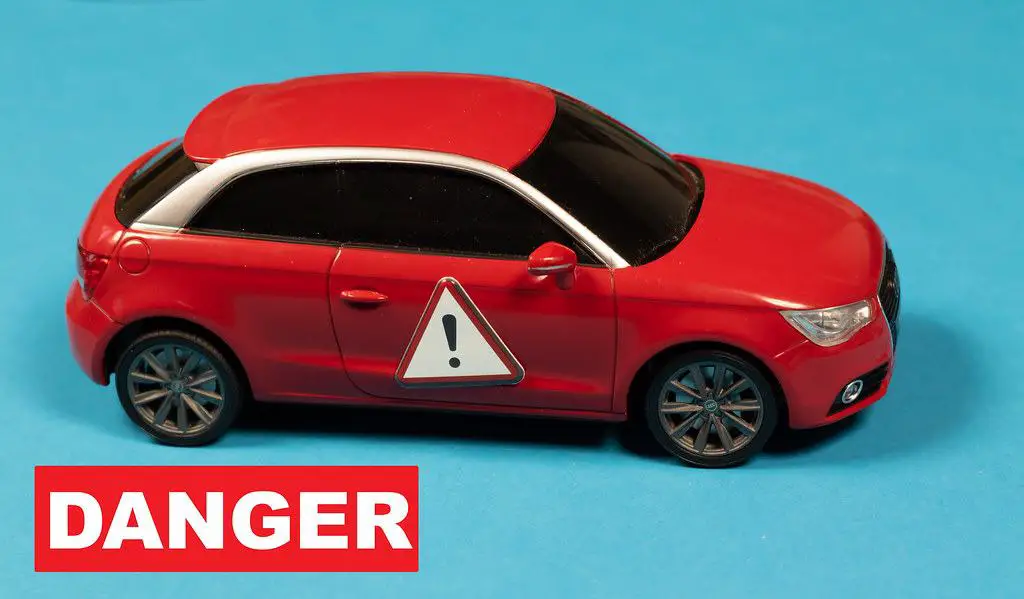The "danger zone" of a car refers to the areas around the vehicle where accidents are more likely to occur, such as the blind spots, the area behind the car, and the area in front of the car when reversing. It is important for drivers to be aware of these areas and take necessary precautions, such as checking mirrors and using rearview cameras, to avoid collisions.
The “danger zone” of a car refers to the areas around the vehicle where accidents are more likely to occur. Understanding and being aware of these areas is crucial for drivers to take necessary precautions and avoid collisions.

The purpose of this article is to provide a detailed and comprehensive explanation of the danger zone of a car and tips for reducing the risk of accidents in these areas.

Common accident areas
Blind spots
Blind spots are areas around a vehicle that are not visible to the driver through the mirrors or rearview camera.
These areas are created by the vehicle’s design and can vary depending on the make and model of the car.
It is essential for drivers to be aware of their vehicle’s blind spots and take necessary precautions to reduce the risk of accidents.
Tips for checking and using mirrors to reduce blind spots
- Before driving, adjust the mirrors to provide the widest possible view of the surrounding area
- Always check the mirrors before changing lanes or merging onto a highway
- Be aware that the mirrors do not provide a complete view of the surrounding area, so it is essential to also use your peripheral vision and turn your head to check for other vehicles or pedestrians
- Use the “head check” technique before changing lanes, where you turn your head and look over your shoulder to ensure there are no vehicles or pedestrians in the blind spot
Area behind the car
The area behind a vehicle is considered a danger zone because it is difficult for the driver to see what is happening in this area, especially when reversing.
This can lead to accidents such as hitting a pedestrian or another vehicle while reversing.
Tips for checking and using rearview cameras to reduce the risk of accidents
- Always check the rearview camera before reversing
- Use the rearview camera and mirrors in conjunction to get a complete view of the area behind the car
- Always check for pedestrians, especially children, before reversing
- Always check for other vehicles, especially motorcycles, before reversing

Area in front of the car when reversing
The area in front of the car when reversing is considered a danger zone because it is difficult for the driver to see what is happening in this area.
This can lead to accidents such as hitting a pedestrian or another vehicle while reversing.
Tips for checking and using rearview cameras and backup sensors to reduce the risk of accidents
- Always check the rearview camera and backup sensors before reversing
- Use the rearview camera and backup sensors in conjunction to get a complete view of the area in front of the car when reversing
- Always check for pedestrians, especially children, before reversing
- Always check for other vehicles, especially motorcycles, before reversing
- Be aware that backup sensors may not detect objects that are very close to the car or objects that are low to the ground.
Additional safety measures
Proper vehicle maintenance
Properly maintaining your vehicle is essential in reducing the risk of accidents in the danger zone.
Regularly scheduled maintenance such as oil changes, tire rotations, and brake inspections can ensure that your vehicle is operating at its best and can help you avoid unexpected breakdowns or malfunctions.
Defensive driving techniques
Defensive driving techniques are essential in reducing the risk of accidents in the danger zone.
These techniques include anticipating the actions of other drivers, maintaining a safe following distance, and being aware of your surroundings.
By practicing defensive driving techniques, you can better prepare yourself for unexpected situations and reduce the risk of accidents.
Staying alert and avoiding distractions while driving
Staying alert and avoiding distractions while driving is crucial in reducing the risk of accidents in the danger zone.
Distractions such as using a cell phone, eating, or applying makeup can take your focus away from the road and increase the risk of accidents.
To stay alert and avoid distractions, it’s best to avoid multitasking while driving and take regular breaks if you feel tired.

Conclusion
In conclusion, understanding and being aware of the danger zone of a car is essential for drivers to take necessary precautions and avoid collisions.
By implementing the tips discussed in this article, such as checking mirrors, using rearview cameras, and practicing defensive driving techniques, drivers can reduce the risk of accidents in the danger zone.
Additionally, proper vehicle maintenance and staying alert and avoiding distractions while driving, can also help to reduce the risk of accidents.
Remember, safety should always be the top priority when behind the wheel.
What should I do if I can’t see a vehicle in my blind spot?
If you can’t see a vehicle in your blind spot, it is best to not change lanes or merge onto a highway.
Instead, slow down and wait for the vehicle to move out of your blind spot before changing lanes or merging.
Can using a rearview camera alone prevent accidents while reversing?
While a rearview camera can provide a better view of the area behind the car, it should not be relied upon alone to prevent accidents while reversing.
It is essential to also use mirrors, backup sensors, and to physically check the area behind the car before reversing.
Are there any specific precautions I should take when reversing in a parking lot?
When reversing in a parking lot, it is essential to check for pedestrians and other vehicles, especially motorcycles, as they may be harder to spot.
Additionally, be aware of the presence of shopping carts, bicycles, or other obstacles that may be in your way while reversing.
How often should I get my vehicle serviced?
The frequency of vehicle maintenance will vary depending on the make, model, and age of the vehicle.
It’s best to check your vehicle’s owner’s manual for the recommended service schedule or consult with a professional mechanic.
Can I use my cell phone while driving if it is in hands-free mode?
Even if your phone is in hands-free mode, using it while driving can be a distraction.
It’s best to avoid using your phone while driving altogether, including hands-free mode.
If you need to make a call or send a message, pull over and park in a safe location before using your phone.